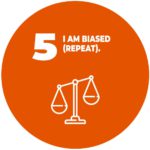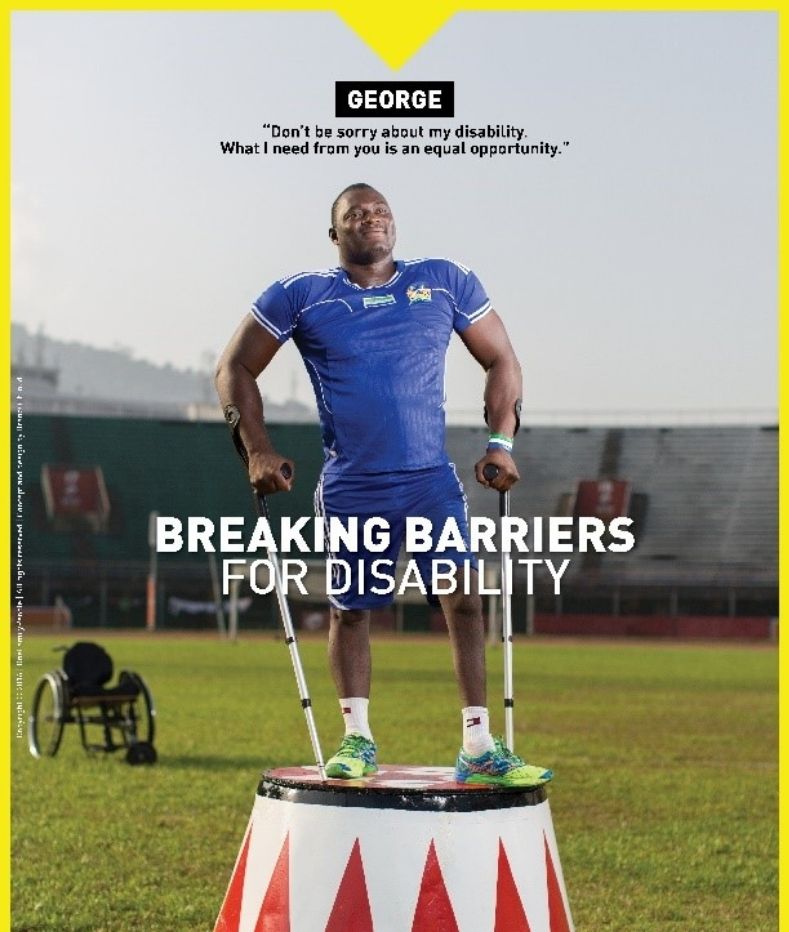Home > About > The Principles > I am biased (repeat)

Dignified storytelling recognises that biases, stereotypes, social stigmas, and power differences exist, whether we are aware of them or not.
Dignified storytelling recognises that biases, stereotypes, social stigmas, and power differences exist, whether we are aware of them or not. We all have specific lenses, both conscious and unconscious, that guide the selection and shaping of stories. These narratives develop over time and must be continually reflected upon and questioned by the storyteller to see if they promote or challenge existing status quo ways of seeing the world – and particularly the world of development.
This means reflecting on historical and cultural power structures, issues of equity, and of one’s individual and organisational role in either upholding or questioning how development work is delivered and communicated out to the world (Source: Jennifer Lentfer, author of “The Development Element: Guidelines for the future of communicating about the end of global poverty” during a four-part webinar series on Changing the narrative: Weaving #ShiftThePower throughout the #Globaldev sector, sponsored by the Global Fund for Community Foundations.)

Dignified storytelling seeks to challenge inequalities and to promote positive social change and the realisation of human rights and potential. Even when working closely with individuals and teams on the ground (for example, country programme teams and/or partner organisations), there are still power and privilege issues at play between local contributors, programme teams or partner organisations, and visiting staff or communication freelancers from outside of the specific community or country. Thoughtful and inclusive planning and communication are needed to put in place strategies to avoid perpetuating the stereotypes, biases, and social stigmas that underpin inequality and discrimination.
Dignified storytelling encourages continuous open reflection and dialogue amongst all stakeholders and holds local expertise and perspectives in high regard. It is committed to including and depicting contributors as equals, rather than passive recipients of any kind of assistance. Dignified storytelling seeks to follow, rather than tryand embraces changes of perspective that can be initiated through the storytelling process.
Guidelines for Principle No. 5:
Dignified storytelling acknowledges and mitigates biases, stereotypes, social stigmas, and power differences.
TO HELP PUT PRINCIPLE #5 INTO PRACTICE, CONSIDER THE FOLLOWING:
Acknowledge implicit bias without defensiveness. Once recognised, the dynamics of culture, race, and gender (among others) can be further dissected, understood, and then responded to.
Language (including text and visuals) needs to be inclusive and should be examined closely for subtle connotations, including sexism, racism, and other forms of bias.
Put in place mitigating factors to lessen inequities; for example, by considering who has various conversations around consent or story planning, and where these discussions take place.
Be aware of the danger of perpetuating a stereotype, and where needed, choose to tell a different story. Just because a stereotype may have a degree of truth behind it, does not necessarily mean that is the story that needs to be depicted.
When possible, select external contractors or creative teams who already have understanding and experience working with the nuances of the situation, ideally because they are from the story setting. At minimum, request potential contractors to provide work samples with relevance to the story and the wider context, showing they can work sensitively and inclusively in that context.
Look for ways to highlight new or unexpected aspects of people’s lives – moments or stories that are authentic, but that also actively refute stereotypes.
If in a position of hiring, look to commission more representative and diverse creatives.
Top Tips for Principle No. 5
Recognize your bias
Do the hard work of reflecting on and recognising one’s own biases and positioning within existing power dynamics.
Seek to be inclusive
Respond by making deliberate creative choices to use inclusive language and to challenge stereotypes and stigma in what stories are told, and how they are told.
More in the Handbook
The Dignified Storytelling Handbook is a resource to help storytellers and organizations promote and
employ storytelling practices that are grounded in a deep respect for human dignity
Available for download in English, Arabic, Spanish and French
